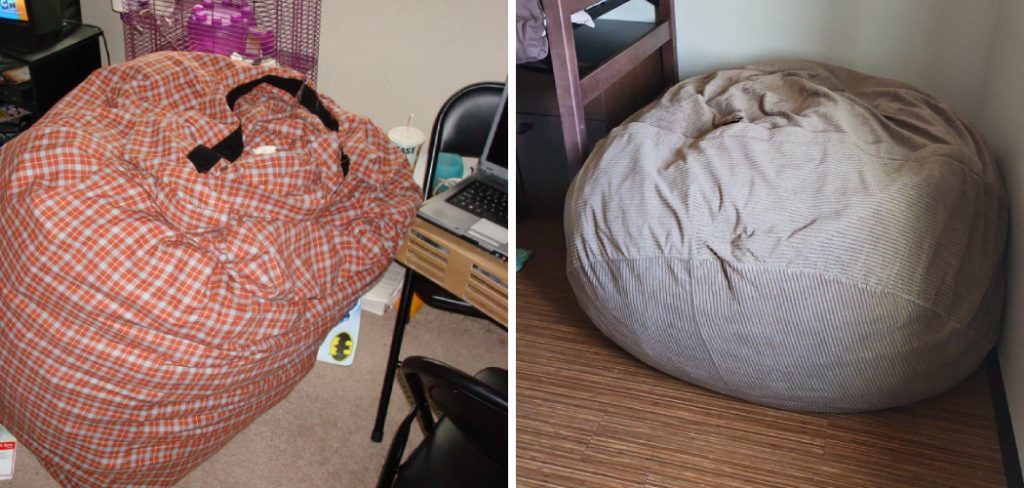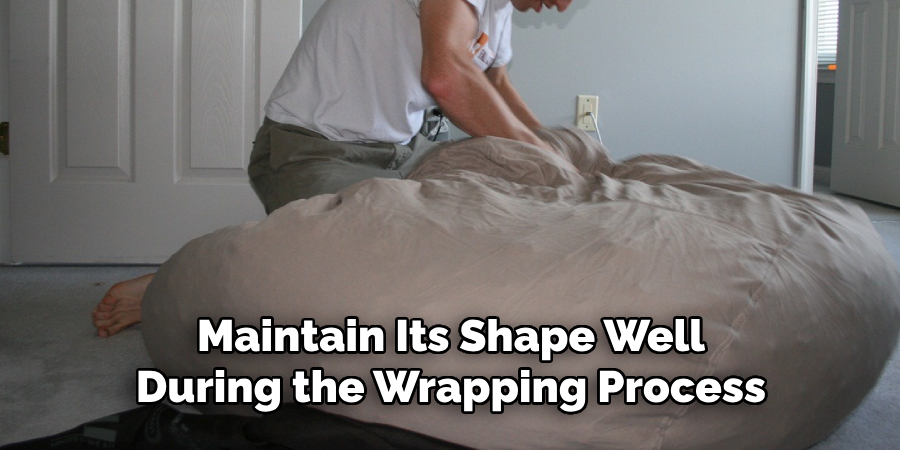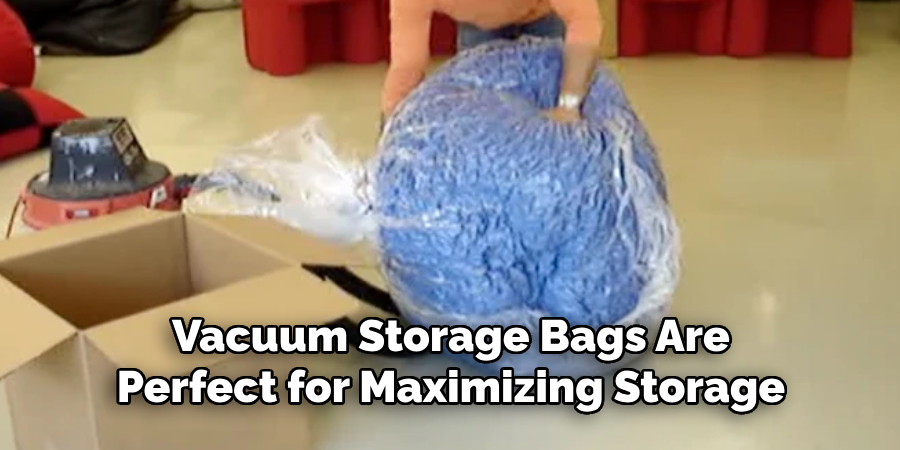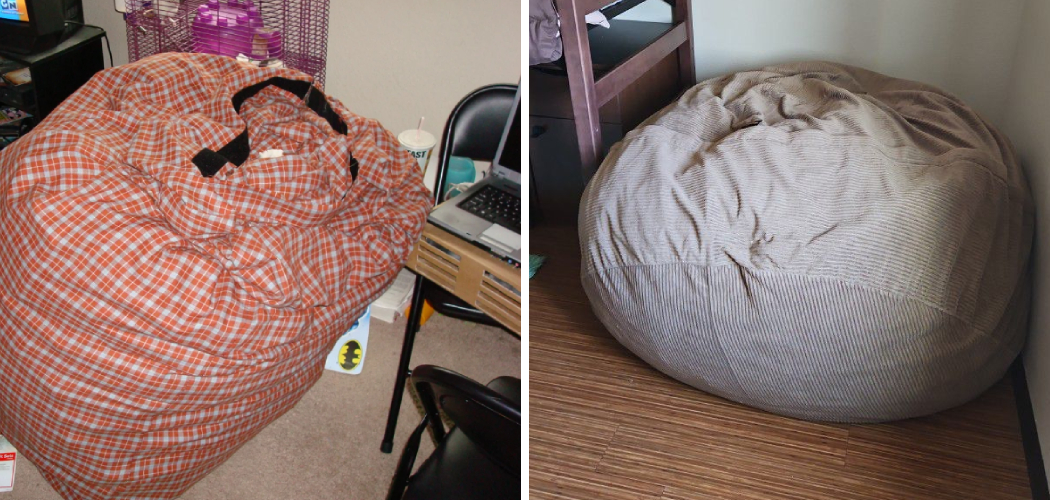Wrapping a bean bag chair may seem like a straightforward task, but ensuring it’s done properly can make all the difference in protecting the chair during transportation or storage. Bean bag chairs, with their unique shape and soft materials, require careful handling to avoid damage to the fabric or filling. In this guide, we’ll walk you through the step-by-step process of how to wrap a bean bag chair.

From preparing the chair and gathering necessary materials to choosing the right wrapping technique and securing it for transport, we’ll cover everything you need to know to safeguard your bean bag chair. Whether you’re moving to a new home, storing the chair for the season, or shipping it to a friend, following these instructions will ensure your bean bag chair arrives safely and remains in pristine condition for years to come.
Importance of Wrapping a Bean Bag Chair
Wrapping a bean bag chair is crucial for several reasons. First and foremost, it helps protect the chair’s fabric and filling from dirt, dust, and moisture, which can cause stains, odors, and other forms of damage over time. This is especially important if you’re storing the chair in an area prone to dampness or pests. Additionally, proper wrapping prevents the fabric from getting ripped or torn during transport.
Bean bag chairs can be bulky and awkward to carry, so without adequate protection, they are more susceptible to snags and abrasions. Finally, wrapping the chair securely ensures it maintains its shape and structural integrity, preventing the filling from shifting or settling unevenly. This means that when you unwrap it, your bean bag chair will be as comfortable and supportive as it was before wrapping.
Assessing the Bean Bag Chair
Before wrapping your bean bag chair, it’s essential to assess its current condition. Start by inspecting the fabric for any signs of wear and tear, such as holes, tears, or thin spots. Addressing these issues beforehand can prevent further damage during transport or storage. Next, check the filling to ensure it is evenly distributed and at a comfortable level. If necessary, add more filling or redistribute the existing filling to achieve an even consistency. This step is crucial because an unevenly filled chair may not maintain its shape well during the wrapping process.

Finally, give the chair a thorough cleaning to remove any dirt, dust, or stains. A clean bean bag chair is not only more pleasant to store or transport but also ensures that the wrapping materials can adhere properly. Taking these preliminary steps will help safeguard your bean bag chair and make the wrapping process more efficient and effective.
10 Methods How to Wrap a Bean Bag Chair
Method 1: Clean the Bean Bag Chair
Before wrapping your bean bag chair, it’s crucial to clean it thoroughly. Use a vacuum with an upholstery attachment to remove dust and debris from the surface. If the cover is removable and washable, follow the manufacturer’s instructions for cleaning. For non-removable covers, spot clean with a mild detergent and a damp cloth. Allow the chair to dry completely before wrapping. Cleaning ensures that no dirt or odors are trapped inside the wrapping, keeping the chair fresh and ready for future use.
Method 2: Use Plastic Wrap for Protection
Plastic wrap is an effective material for wrapping a bean bag chair, especially for short-term protection against dust and moisture. Start by spreading a large sheet of plastic wrap on the floor. Place the bean bag chair in the center and wrap it tightly, ensuring all parts are covered. Use several layers if necessary, securing the ends with packing tape. This method is particularly useful for protecting the chair during home renovations or short-term storage.
Method 3: Utilize Moving Blankets
Moving blankets provide excellent protection for bean bag chairs during transport. Lay a moving blanket flat on the floor and place the chair in the center. Wrap the blanket around the chair, tucking in the edges to cover it completely. Secure the blanket with packing tape or straps. Moving blankets offer cushioning and prevent tears or abrasions, making them ideal for long-distance moves or when the chair is stored alongside other heavy items.
Method 4: Employ a Storage Bag
Storage bags designed for furniture are a great option for wrapping bean bag chairs. These bags are typically made from durable, breathable materials that protect against dust, dirt, and moisture. Choose a storage bag that fits your bean bag chair snugly. Place the chair inside the bag and zip it up securely. Storage bags are convenient for both short-term and long-term storage, ensuring the chair remains clean and protected.
Method 5: Use a Vacuum Storage Bag
For a space-saving solution, consider using a vacuum storage bag. These bags are designed to compress the contents, making them ideal for storing bulky items like bean bag chairs. Place the chair inside the vacuum storage bag and seal it according to the manufacturer’s instructions. Use a vacuum cleaner to remove the air, reducing the chair’s volume significantly. Vacuum storage bags are perfect for maximizing storage space and keeping the chair protected from dust and moisture.

Method 6: Wrap with Shrink Wrap
Shrink wrap offers a tight, secure covering for bean bag chairs, particularly useful for long-term storage or transport. Begin by placing the chair in an upright position. Wrap the shrink wrap around the chair, starting at the bottom and working your way up. Use a heat gun to shrink the wrap, ensuring a snug fit. Be careful not to apply too much heat to avoid damaging the fabric. Shrink wrap provides a strong, protective layer that guards against dirt, moisture, and pests.
Method 7: Use Heavy-Duty Garbage Bags
For a cost-effective and straightforward wrapping method, heavy-duty garbage bags can be used to cover a bean bag chair. Choose large, thick garbage bags that can accommodate the chair’s size. Place the chair inside one or two bags, depending on its dimensions, and seal the opening with tape. This method is particularly useful for short-term storage or transport and provides basic protection against dust and moisture.
Method 8: Employ Furniture Covers
Furniture covers, specifically designed for protective covering, offer a tailored fit and enhanced protection for bean bag chairs. These covers are available in various sizes and materials, including waterproof options. Select a cover that fits your chair snugly. Slip the cover over the chair and secure any fastenings. Furniture covers are ideal for both indoor and outdoor storage, providing a barrier against environmental elements and potential damage.
Method 9: Double-Wrap for Extra Protection
For maximum protection, consider double-wrapping your bean bag chair using two different materials. Start by wrapping the chair in a layer of plastic wrap to guard against moisture. Then, cover the chair with a moving blanket or a storage bag for added cushioning and protection. Double-wrapping ensures that the chair is well-protected from various types of damage, making it suitable for long-term storage or transport.

Method 10: Label and Store Properly
Once your bean bag chair is wrapped, proper labeling and storage are essential to ensure it remains in good condition. Attach a label to the wrapped chair indicating its contents and any special handling instructions. Store the chair in a clean, dry area away from direct sunlight and extreme temperatures. If storing multiple items, keep the bean bag chair on top to avoid crushing it. Proper labeling and storage help maintain the chair’s shape and condition, making it easier to locate and use in the future.
Common Mistakes to Avoid
When wrapping and storing your bean bag chair, several common mistakes can compromise its condition. One frequent error is neglecting to clean the chair thoroughly before wrapping it, which can trap odors and dirt inside the covering. Another mistake is using insufficient or improper wrapping materials that fail to provide adequate protection against moisture, dust, or pests. It’s also crucial to avoid over-tightening wraps like shrink wrap or plastic wrap, which can damage the fabric.
Additionally, storing the bean bag chair in an area exposed to direct sunlight or extreme temperatures can lead to fading, mildew, or structural damage. Finally, improper stacking of items can crush the bean bag chair, so always ensure it is placed in a manner that maintains its shape and integrity. By being mindful of these common pitfalls, you can ensure your bean bag chair remains in excellent condition during storage.

Conclusion
Wrapping a bean bag chair requires careful consideration of the material and method to ensure optimal protection. By cleaning the chair beforehand and choosing the right wrapping materials—such as plastic wrap, moving blankets, storage bags, or shrink wrap—you can effectively safeguard it against dust, moisture, and damage.
Employing additional techniques like double-wrapping and using vacuum storage bags can provide extra protection and save space. Hopefully, this article gave you some helpful tips about how to wrap a bean bag chair successfully, so now that you have the proper knowledge on how to get the job done, why not give it a try today?
